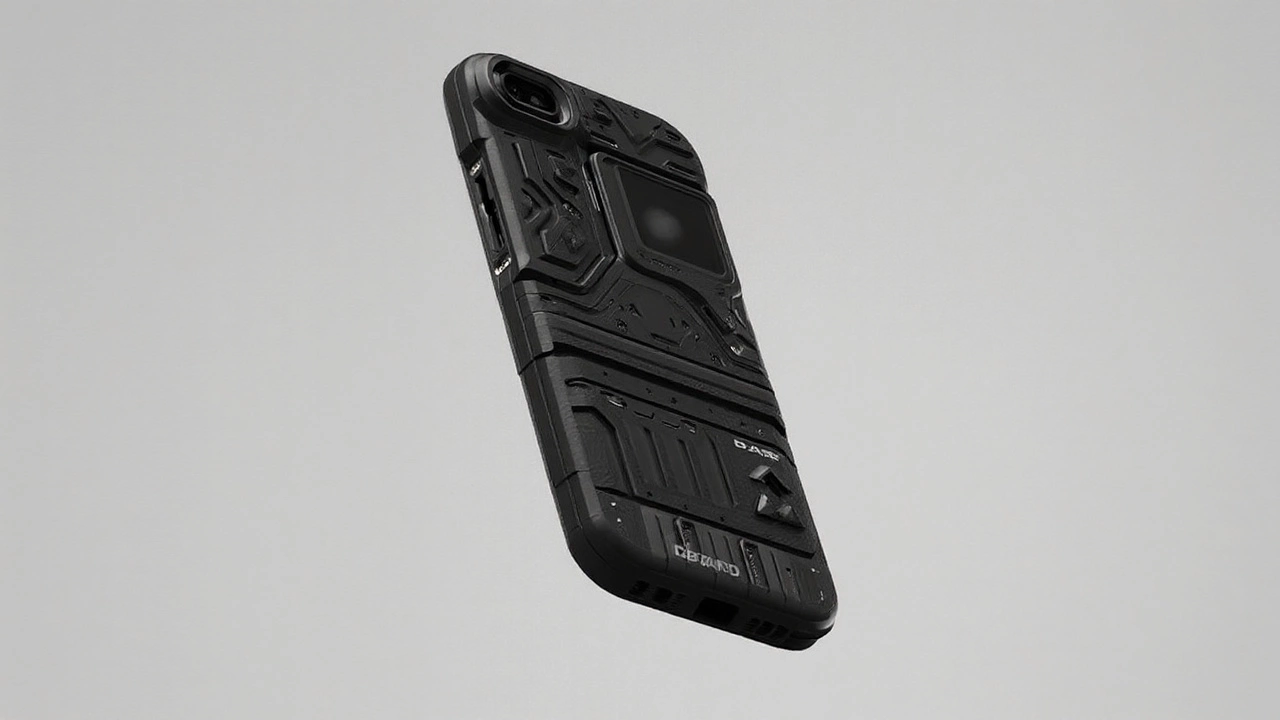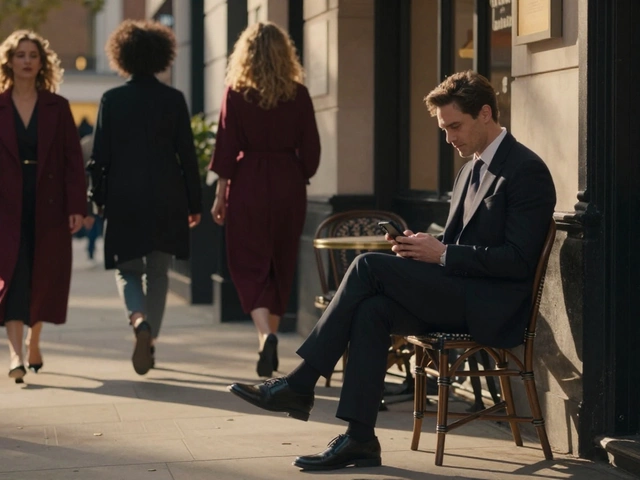Dbrand jumps the gun, and the iPhone 17 takes shape
Apple hasn’t said a word yet, but the accessory world already has cases on the shelf. Canadian brand Dbrand has rolled out a full lineup for the rumored iPhone 17 family almost a month before Apple’s “Awe Dropping” event on September 9, 2025. This isn’t a one-off teaser either. The company first teased its Tank Case in August and has now expanded to covers for the standard model, the new Air variant, and the Pro and Pro Max.
The Tank Case is the headline grabber. It uses a hard black shell, splashed with coded numerals, a bold Eye of Providence placed over what looks like the MagSafe zone, and a strip that resembles Braille. It leans into Dbrand’s trademark industrial look more than any of its Grip or Teardown-style designs. There’s no price yet for Tank, but Dbrand is collecting email signups to ping buyers once it’s ready.
Beyond that showpiece, Dbrand’s more mainstream cases are live for pre‑order in the $35 to $50 range, with shipping set for September—timed to follow Apple’s keynote and review embargoes. The timing is not accidental. Case makers plan production around the iPhone calendar because day-one compatibility can make or break a season’s sales.
What’s different this year is how closely Dbrand’s designs line up with competitors. Spigen, Nudient, and Pitaka are showing near-identical cutouts, suggesting they’re all working from the same CAD files and measurement sheets sourced months ago. When three or four big names all agree on the holes and bumps, it’s usually because the data is strong.
So what do these cases reveal? The biggest tell is the camera bar on the Pro line. Instead of the familiar square island, the Pro and Pro Max appear to carry a raised, full‑width strip across the top of the back panel. It’s a clean rectangle spanning edge to edge, higher at the camera region and thinning toward the frame—something you can only design around if you know exact heights and tolerances.
Dummy units photographed inside some of these cases show three 48MP lenses grouped on the left, with flash and LiDAR hardware separated on the right. That layout tracks with months of supply chain chatter that Apple wants more room for larger sensors, better thermal control, and potentially longer focal lengths without a massive bulge. A horizontal bar spreads the mass and gives engineers a bigger canvas for lens placement and stabilization.
The cases also confirm the button story. There’s a cutout above the volume keys where the Camera Control button lives, a feature Apple introduced last year and is now standard across the line, according to the case geometry. The Action button remains on the left, with power on the right, and the expected MagSafe ring in the middle of the back, hidden under Dbrand’s graphics.
Model names look locked in across the case listings: iPhone 17, iPhone 17 Air (replacing the Plus), iPhone 17 Pro, and iPhone 17 Pro Max. Early sizing hints point to 6.3-inch displays for both the base and Pro models—bringing the smaller Pro and the standard iPhone into closer alignment. The iPhone 17 Air is described as slimmer, with a single rear camera mounted within a “runway” style version of the bar, a move that would keep the lineup visually consistent while marking the Air as the lighter, longer‑battery everyday model rather than a camera beast.
None of this is official, and there’s a recent lesson in humility. Patrick Holland, CNET’s managing editor and a longtime mobile reviewer, warns that early case runs can get burned by surprise changes. It happened last year when the iPhone 16’s Camera Control button arrived late in the rumor cycle, forcing rushed redesigns and extra costs for manufacturers who had already cut molds. That risk never goes away. It’s the tax for being early.
Still, the multi‑brand alignment this time is hard to ignore. Accessory companies don’t gamble on tooling unless they’re confident in the upstream data. Typically, that data flows from factory partners who share dimensional drawings, from accessory program briefs, or from the third‑party “dummy” units built to those schemes. The goal is simple: avoid the post‑event scramble that used to leave shelves empty for weeks after launch.
Pricing signals also matter. Dbrand’s $35–$50 bracket puts these cases squarely in the premium-but-not-luxury tier, competing with Spigen’s Tough Armor and Nudient’s thin cases while leaving room above for boutique leather and metal frames. If the Tank Case lands higher—as its build suggests—it will target people who want drop protection and a look that stands out on a table without screaming neon.
Design-wise, the Eye of Providence glued to the MagSafe center is classic Dbrand provocation: part meme, part brand stamp, part magnet for social feeds. The numbers and braille-like dots lean into the “coded blueprint” vibe that accessory buyers seem to enjoy. Under the theatrics, though, the shape is dictated by Apple’s rumored hardware: a wide bar that forces case makers to rethink how they handle lip height, lens protection, and wobble when the phone is set down.
For photographers, a horizontal bar could bring trade‑offs. Spreading lenses on a single plane might help heat dissipation and reduce shadowing from raised rings. It could also let Apple standardize protective glass across lenses, which is easier to clean and less prone to collecting pocket lint. The downside? Wider glass is more exposed, so case rails and ridge geometry need to be taller at the ends without adding bulk near the sides. That’s the kind of detail these early cases are already solving.
The Air model is the wild card. Replacing the Plus makes sense if Apple wants a clearer story: Pro for camera and performance, standard for most people, and Air for the thinnest and lightest with big battery life. A single camera in a bar is an unusual look in 2025, but it could simplify the design and make the phone feel slim in hand, like the way the MacBook Air balances power and portability without chasing Pro specs.
What should buyers do with all this? If history holds, cases that match across multiple brands usually fit the final devices. If you pre‑order, stick to brands that allow easy returns in case Apple springs a late change. And if you care about camera reliability, pay attention to how case makers shape the edges around the bar—some will prioritize drop protection, others will keep the rails minimal to avoid corner glare in photos and videos.
Another detail worth noting: the button cutouts and haptic pass‑throughs. The Camera Control key is pressure-sensitive, and cheap cases can blunt the feel. Premium cases use stiffer button caps or floating bridges so one light press equals the right input. Given how central that button has become for quick focus and video, it’s a small but vital design choice that shows up only after a week of use.
The launch calendar appears predictable from here. Apple reveals the phones on September 9. Reviews land days later. Early batches of cases ship within the same window so buyers can pair them with their new phones at pickup. If Apple adds a curveball—say, a mic move, a sensor shift, or a small change to the bar’s height—some case lines will quietly get a “Rev B” in late September. That’s the unglamorous side of the accessory business: version numbers nobody sees, just to keep tolerances tight.
For now, the Dbrand lineup acts like a blueprint for the iPhone year ahead. A wide camera bar across Pro models, a slim Air replacing Plus, consistent button layouts with Action and Camera Control, and screens converging around 6.3 inches for the smaller pair. The only big unknowns are Apple’s prices, the exact sensor mix behind those lenses, and whether the company has one more surprise tucked away for the stage. Case makers seem convinced the hardware is locked. We’re about to find out if they bet right.
Key takeaways from the accessory leaks
- Dbrand lists cases for all four models: iPhone 17, 17 Air, 17 Pro, and 17 Pro Max.
- Pro models show a full‑width camera bar with three lenses on the left and flash/LiDAR on the right.
- Buttons indicated by cases: Action (left), Camera Control (above volume), power (right).
- Dbrand Tank Case features a hard black shell with coded graphics, Eye of Providence over MagSafe, and braille-like patterns; price not yet revealed.
- Other Dbrand cases run $35–$50, with shipping planned for September after Apple’s event.
- Spigen, Nudient, and Pitaka designs match the same geometry, pointing to shared pre‑release specs.
- Experts warn that last‑minute changes can still happen, as seen with the iPhone 16’s late button surprise.

